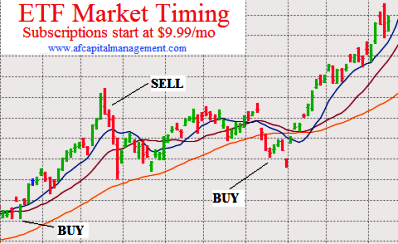For anyone interested in covered call selling, consider understanding naked put selling as a better option. The risk/reward graph of both methods will show writing naked put options is the same as writing covered call options. (selling = writing, for those not familiar with the term.) They both pay you up front to limit your upside return while leaving you open to big losses if the stock goes to $0.00. I’ll admit when assigned a stock after selling a naked put I write covered calls sometimes, but my greatest returns come from writing naked puts. Here are the five of the reasons why:
- The best covered calls’ profits come from volatile stocks. Writing options in the money (ITM) will reduce this risk, but with covered call options you will face the wash rule when a stock is assigned and you re-write the covered call option at a the same strike (i.e. less than your purchase price). This is more common when you write deep in the money covered calls. Writing naked puts lets you buy the stock at the reduced price so you are able to sell covered call options after being assigned the stock at the same strike, therefore dodging the wash rule, legally.
- Covered call income is less than naked put income since you do not have to own the underlying stock with naked puts more “margin-free” cash can be used for naked puts. This creates greater cash flow. Warning: selling more naked puts than you can afford to be assigned is a recipe for disaster. I attempt to write naked puts on two times the cash I have in reserves. In a hard fast fall I stand to loose a large percentage, but in the other 119 months in between such events I do very well (assuming an event like this happens every 10 years).
- Covered call investing requires you to own the underlying stock. Naked put investing allows you to keep your cash in a money market gaining interest while the time value of the options’ premiums deteriorate.
- Selling covered calls with leaps keeps your cash tied up even longer. Selling naked puts with leaps lets you gain even more guaranteed interest in your money market while the naked put option deteriorates. I prefer selling options with shorter time horizons, but it’s worth mentioning since some others prefer the longer holding periods.
- Selling covered calls takes two trades to enter a position while selling naked puts only takes one trade. Commissions are saved by selling naked puts.
- Selling covered calls gives you two opportunities to miss the best price to enter the position while selling naked puts allows you to be more patient with your entry points by using only one limit order. If you are not reading this post on www.mytradersjournal.com you are reading it from a site that has plagiarized it.
I know the title is “5 Reasons…”, but I’m admitting one advantage covered call selling can have over naked put selling, so I’m deducting it from the total.
-1. When selling covered calls on stocks that pay dividends, you have the added benefit of receiving the dividend since you are long on the stock.


3. False — You can own a LEAP instead.
4. False — Your money is tied up either way.
3. Good point on owning the leap instead of the underlying stock. That still requires taking money from your account to make the transaction as opposed to a naked put that only requires you have a small amount available to cover if assigned.
4. The money used to buy the underlying stock for a covered call can be placed in a money market to draw interest. I have $40k of my supporting cash in a money market right now. I’m getting 5% interest while it’s there and available if the option is assigned. Since I try to run at 2x underlying stock value, using naked puts allows me to not pay interest for margin as I would with buying a stock and then selling a covered call.
Don’t get me totally wrong though. I still sell covered calls sometimes, I just like to open the position with a naked put.
I am trying to figure what the returns will be if i am using a leap to write short term monthly calls. If any one know some articles or blogs drop me a line. Thanks
Tony, you didn’t leave any contact info. You can use one of the spreadsheets in my “Excel Spreadsheets” section. You’ll need to update the formula for only using a leap as the long position vs the full stock ownership as I have it set up.
Part of your analysis is correct. The tax implications are important if you are trading in a taxable account. And the slippage on entering two transactions does add another layer of risk.
But the points accounting for dividends and interest are not correct. Option prices are efficient and account for not only volatility and time decay premium but also for interest opportunity cost and most definitely dividend events.
I appreciate your thought pattern here, but the market is more efficient than you give it credit for.
Zach, I might have to write a version 2 of this post with all the valuable feedback I’ve been given. The CC advantage with dividends might only come down to the lower tax paid on dividends than on option income. You are generally right about dividends being priced in.